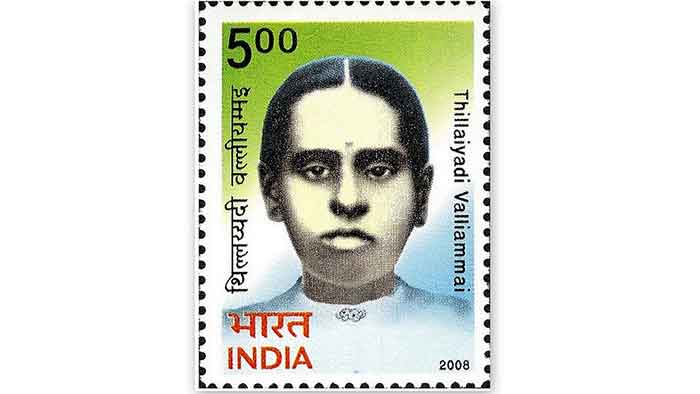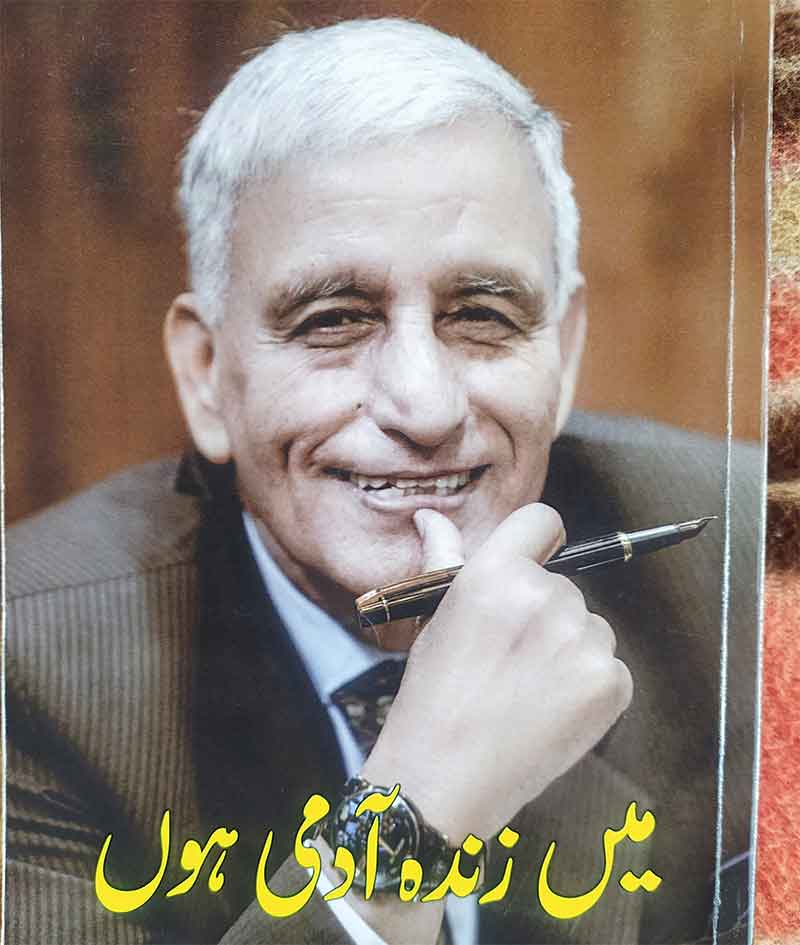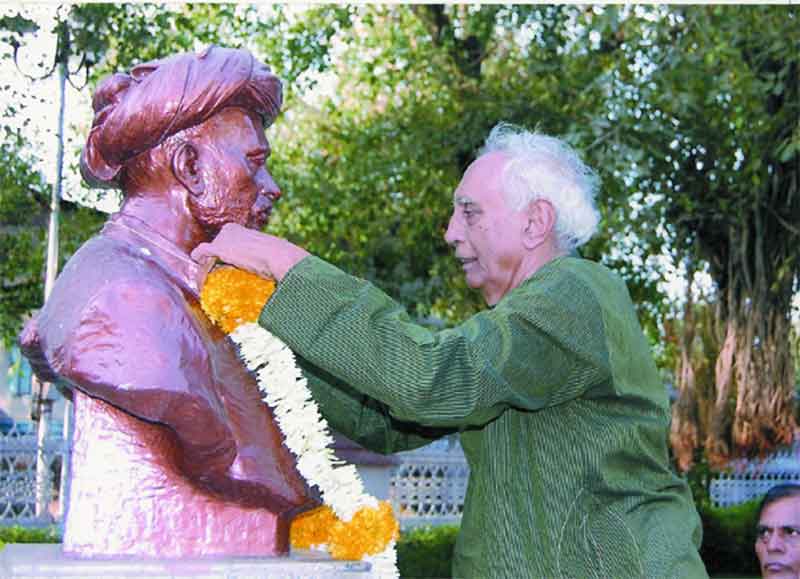
Yesterday, 22 February, was Kasturba Gandhi’s 78th death anniversary. Kasturba died in 1944 and at the time she was in prison, arrested on 9 August 1942, the first day of the “Quit India Movement”. Gandhiji had already been arrested the previous evening, and both of them along with some of their closest colleagues were imprisoned at the Agha Khan Palace in Pune (then Poona). It was there that Kasturba breathed her last and with the government refusing permission to carry her body outside, her cremation was carried out in the Palace premises itself. Her last resting place is next to that of Mahadev Desai, Gandhji’s personal secretary, who had died a year and half years ago, actually within a week of the Quit India Movement, on 15 August 1942.
But 22 February is also the death anniversary of another martyr – Kasturba’s fellow prisoner in South Africa – Valliamma Munnuswamy Mudaliar (now popularly known as Thillaiyadi Valliamma) who died on this very date in 1914.
Born in Johannesburg on 22 February 1898, Valliamma was the elder daughter of Munnuswamy and Mangalam Mudaliar, originally from Thillaiyadi village in Nagapattinam (Tamil Nadu). Munnuswamy used to sell vegetables on a cart and remarkably, both husband and wife were keen participants in the non-cooperation movement there. As a child, Valliamma would occasionally accompany her father to these political meetings and rallies.
For the Indians in South Africa, it was a period of protest – primarily against the imposition of Three Pounds tax in 1895 on Indians, who were not indentured labourers. There were ongoing attempts to repeal that tax, and for which Gopal Krishna Gokhale too had visited South Africa, but all without success. And, as a result, the protest had somewhat slackened at the time. But then, on 14 March 1913, a new ruling by Justice Malcolm Searle of the Cape Town Supreme Court, reignited the protests and in a much bigger way.
According to the new rule, the validity of marriages not conducted in court or not performed according to Christian rites was abolished. This straight-away targeted the Hindus and Muslims. Married couples among these populations were legally no longer husbands and wives – in effect, the wives would henceforth be considered their husbands’ mistresses. And their progeny too were no longer their legal heirs.
Gandhiji had written to the Government, seeking clarification on the new ruling on marriages and argued that Hindu and Muslim marriages had their established rights, valid in the British ruled India. And by not accepting that validity, South Africa was overstretching its reach. The response from the Government was expectedly negative. The Satyagrah Association took a crucial decision that henceforth no appeals would be made to the government and a strong “satyagrah” will be mounted against the “unmentionable humiliation”. Justice Searle’s ruling had deeply upset women, who until then had remained in the background against the Three Pounds tax, to now openly not just step out against what they felt was an attack on their honour but in fact be at the forefront of the protests.
As Kasturba told Gandhiji clearly and firmly, “I WILL participate in this struggle!”
He asked her to reconsider her decision since she could be arrested and imprisoned, to which Kasturba’s reply was, “I do not have to reconsider it. I am fully determined”, and added that rather than being called a mistress she would prefer being imprisoned.
This decision to take a prominent role in the protests, turned Kasturba from an “ordinary housewife” to one who led Gandhi to the road where leadership began!
At the time, under another law, in Transvaal, Indians were also not allowed to enter or exit without a permit. It was decided that the protesters would break this law, enter and protest in Transvaal, proceed to Natal and finally to the coal mining sites in Newcastle and urge the labourer under contract and others to go on strike. The strategy was to get arrested anywhere en route, fill the prisons and have the matter taken to court.
The women protesters, in particular, formed three separate groups and each moved along different routes. Kasturba was leading the second group comprising four women and 12 men. At the Volksrust Station, entering Transvaal, the group was off-loaded from the train but not arrested. The government felt that arresting them would only help publicise the protest and its issues. Three days later, the police put the protesters in a vehicle and dropped them across the Transvaal border in Natal. But the protesters were not to give up easily; they re-entered Transvaal, upon which they were arrested.
This was in September 1913, and the entire group was sentenced to three months hard labour in Peitermaritzburg jail in Natal. This was in the same locality where at its railway station in 1893, MK Gandhi, the lawyer, had been thrown out of the train, which proved to be the catalytic step in his transformation into a people’s leader.
After a few weeks, in October, another group comprising 11 women were also arrested, given a three months sentence and sent to the same Peitermaritzburg jail. Thereafter, a third group which included Valliamma, entered Orange Free State. This group also comprised 11 women, of which six had their small children with them. They started selling vegetables without permit which, again, was illegal. Like the earlier groups, they were determined to get arrested but that did not happen. So they left and entered Natal and started to hold discussions and public meetings. The government then arrested the women. However, Valliamma was not among them.
No sooner were the women arrested that coal mines and plantations workers struck work, and their strike spread rapidly. In November, Gandhiji with around 2000 men, women and children embarked on a “Long March”. Valliamma and her mother joined this “Long March” and on 23 December 1913, they were arrested on the borders of Volksrust and like the earlier groups sentenced to three months hard labour and sent to Peitermaritzburg jail.
All this while, on the dusty march down the fields, on dusty roads, eating little, sleeping less had taken its toll on the frail bodied Valliamma, and at the time of her arrest, she was already not well. Abject conditions in the prison, hard labour and food unfit to eat further worsened her condition. Gandhiji approached the Interior Minister General Smuts and requested that Valliamma be released on health grounds. General Smuts laid out some conditions, that Valliamma could be released provided she write an apology and gave an assurance she will not participate in similar agitations in future. Valliamma was a highly determined idealist and spurned the offer to write an apology and win here release, despite her rapidly deteriorating health.
Seeing that the protests were escalating, and that its heat was beginning to be felt in India as well, General Smuts constituted a Commission, on whose recommendations then he and Gandhi met in mid-January and a provisional agreement was reached, whereby the Three Pounds tax was lifted and the legality and validity of Indian marriages were restored.
Thereafter, the prisoners, including Valliama and her mother were released on 7 February. After her release, because of her extremely poor health, it took Valliamma almost two weeks to reach her home – on 20 February.
Recollecting meeting her at the time, Gandhiji stated, “How can I forget her? Valliamma R Munnuswamy Mudaliar was a young girl from Johannesburg, only 16 years of age. She was confined to bed when I saw her. As she was a tall girl, her emaciated body was a terrible thing to behold.”
Writing in his Satyagrah in Africa Gandhiji notes that he asked Valliamma if she regretted being imprisioned. To this, her reply was, “Repent? Even now I am ready to go to jail again, if arrested.”
“But what if it results in your death?” he asked her again.
Valliamma replied, “Who wouldn’t want to sacrifice her life for the Motherland?”
For Valliamma, it seemed as if she had no other desire – and to reach her home, for barely two days later, on 22 February, she breathed her last.
The Satyagrah in South Africa had turned Valliamma from an ordinary girl into an extraordinary revolutionary. In her sacrifice she became a symbol of hope for the youth, for the women and for the indentured minority.
On 15 July 1914, three days before leaving South Africa, Gandhiji visited the Braamfontein cemetery in Johannesburg and attended a ceremony to unveil a tablet to commemorate Valliamma (and Samy Nagappan, who had been martyred in the movement in 1910). He said, “Valliamma’s name shall ever remain in the history of the Satyagrah in South Africa as long as India lived.”
Unfortunately, later, the cemetery became abandoned and ruined. It was only much later, through the tireless efforts of the South Africa Tamil Association and with the help of the Indian High Commission, the nameless graves of Valliamma and Nagappan were rediscovered in 1994. Coincidently, it was around the same time, the grave of poet Inok Sontonga was also rediscovered. Sontonga’s composition Kosi Sikelele Africa was to form the basis of national songs of several African nations and also of South Africa after it becoming a democracy. Acclaimed South African author Aziz Hassim wrote a book “The Agony of Valliamma”. He saw her death as a significant milestone in the struggle for equality and self-determination in the land of her parents’ adoption and her birth.
In 1997, in a memorial in honour of Valliamma and Nagappan, the then High Commissioner of India, Gopal Krishna Gandhi, paying his tribute to Valliamma, said, “There is something wisp-like about you, Valliamma, which eludes us. No longer a child nor yet a woman, what made you decide to join the marchers to become a revolutionary? I can just picture you jumping over the runnels of water, doe stepped, with the light of youth in your eyes, helping the older marchers along…Did they sing as they marched, Tamil songs, perhaps some in Hindi or in Gujarati? I wonder what your thoughts were during the march. You had not been to India, you could not have pictured your ancestral village, its little temple and its paddy fields. You were South African, of South African earth, knowing only its sugarcane acres and its mines…..But whatever your thoughts were, they were certainly about life, about living, about the future. You were there when the police arrived, raising pandemonium. You were there when the arrests began. I wonder what you felt when you entered the prison gates, when the iron doors clang shut behind you. You were a child of the sun and the air, what did your mind say when you entered the dark and damp of the Peitermaritzburg jail? ….. Today, in particular, I am reminded of another person who was in that jail with you – Kasturba. You were prisoners together and she too was martyred. Coincidentally, she too died on the same date, 22 February, exactly 30 years later, in 1944. You both were co-prisoners in Peitermaritzburg and both your deaths was not death but a celebration of the indomitable spirit of Satyagrah”
In 1971, Thilliayadi Valliamma Memorial Hall, including a public library was instituted in the village of Thilliayadi, now in Tharangambadi taluka, Nagapattinam. A stamp was released in her honour on 31 December 2008.
Biju Negi, Hind Swaraj Manch and Beej Bachao Andolan [email protected]















































